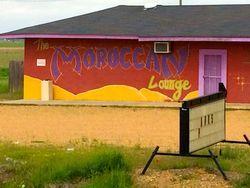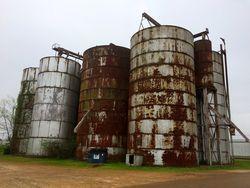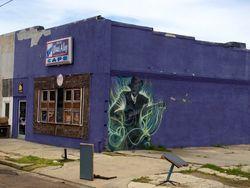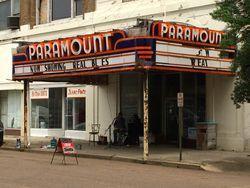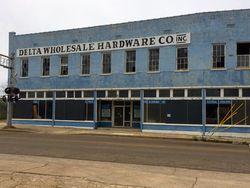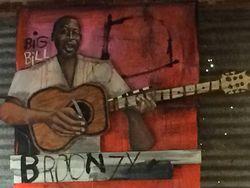 Mississippi claims to be the “birthplace of America’s music” in their promotional literature. It seems that when it comes to blues they have a good claim. However, New Orleans was the birthplace of jazz and Louisiana was home to much more, such as Louisiana's Huddie Ledbetter or "Leadbelly," as he became known, whose blues begin in 1912 before many of the Mississippi blues men were born and includes the classic "Midnight Special." So there is a controversy here. These two music forms, jazz and blues, along with gospel spawned much of what followed. Both can claim credit for R&B with Mississippi's Ike Turner's 1951 "Rocket 88" but then there is Fats Domino's 1949 hit, "The Fat Man." So it was very meaningful to make a pilgrimage from New Orleans to north Mississippi where many blues artists originated. We came for the Juke Joint Festival in Clarksdale but also to see more of the Mississippi delta region that lies between the Yazoo and the Mississippi rivers.
Mississippi claims to be the “birthplace of America’s music” in their promotional literature. It seems that when it comes to blues they have a good claim. However, New Orleans was the birthplace of jazz and Louisiana was home to much more, such as Louisiana's Huddie Ledbetter or "Leadbelly," as he became known, whose blues begin in 1912 before many of the Mississippi blues men were born and includes the classic "Midnight Special." So there is a controversy here. These two music forms, jazz and blues, along with gospel spawned much of what followed. Both can claim credit for R&B with Mississippi's Ike Turner's 1951 "Rocket 88" but then there is Fats Domino's 1949 hit, "The Fat Man." So it was very meaningful to make a pilgrimage from New Orleans to north Mississippi where many blues artists originated. We came for the Juke Joint Festival in Clarksdale but also to see more of the Mississippi delta region that lies between the Yazoo and the Mississippi rivers.
The Mississippi Blues Trail includes a series of markers. As the web sites says, the trail “markers tell stories through words and images of bluesmen and women and how the places where they lived and the times in which they existed–and continue to exist–influenced their music. The sites run the gamut from city streets to cotton fields, train depots to cemeteries, and clubs to churches.” Below is the front of a marker in Clarksdale for Ike Turner and the Ground Zero Blues Club, also in Clarksdale.
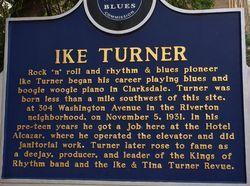
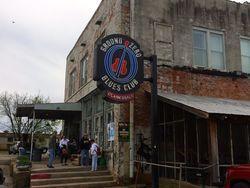
There are a number of museums, including four we visited: the Delta Blues Museum and the Rock & Blues Museum in Clarksdale, and Elvis Presley Birthplace & Museum in Tupelo. The B.B. King Museum and Delta Interpretive Center deserves its own post and will be covered next. The Delta Blues Museum is in the old train depot built in 1918 for the Yazoo and Mississippi Valley Railroad. It has many great exhibits including the remains of the cabin from Stovall Farms where Muddy Waters lived during his days as a sharecropper and tractor driver. It is across the street from the Ground Zero Blues Club.
It was interesting to compare content within the B. B. King museum with the Elvis birthplace museum in Tueplo. The latter was much smaller and only covered the early years of Elvis. There was a picture of the young Elvis and B.B. standing together on the blues trail marker outside the Elvis museum. Here are also views of the exterior and interior of the house where Elvis was born. Ironically, they both left MS for Memphis in the same year to better themselves. Elvis went with his family as a 13 year old on his father's decision, and B.B, went on his own as a 23 year old established musician. B.B. went on to take his big band version of electric blues to the world, making himself and his music famous. Elvis created a synthesis of blues, gospel, and country to help start a new strand, rock and roll. Both were products of north Mississippi at the mid-20th century and each changed the world.
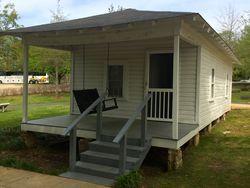
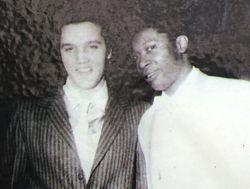
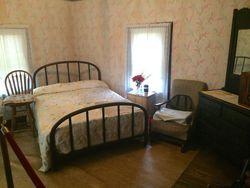

Here some views of the countryside and towns along the trail including two of the many blues clubs still in operation.
